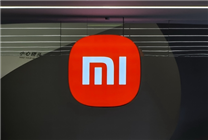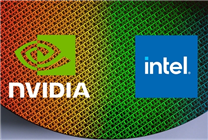Nvidia Under Scrutiny: Stock Plummets Amid Regulatory Challenges
Summary:
- Nvidia faces investigations by China’s State Administration for Market Regulation for alleged anti-monopoly violations.
- The company’s stock dropped over 2% before market opening in the U.S.
- Tsinghua University professor Wei Shaojun advocates for Asian nations to move away from reliance on Nvidia GPUs for AI developments.
The ongoing scrutiny of Nvidia has escalated significantly, as the State Administration for Market Regulation (SAMR) in China has announced an extensive investigation into the company’s practices, particularly in relation to anti-monopoly regulations. This development comes on the heels of a concerning announcement, revealing that Nvidia’s operations potentially violate the Anti-Monopoly Law of the People’s Republic of China.
The announcement indicated that SAMR has decided to conduct a detailed investigation following preliminary findings indicating that Nvidia breached significant regulatory frameworks, including the conditions linked to its acquisition of Mailos Technology Co., Ltd. Following this news, Nvidia’s stock saw a noticeable decline of over 2% before the trading day even commenced in the U.S. markets, raising concerns among investors about the company’s future prospects, particularly in Asia.
Amidst these regulatory challenges, prominent voices within the academic community are calling for a strategic shift in how Asian countries approach artificial intelligence (AI) development. Wei Shaojun, a vice president of the China Semiconductor Industry Association and professor at Tsinghua University, has issued a stark warning: relying on U.S. hardware, such as Nvidia’s graphics processing units (GPUs), poses significant long-term risks to China and its various partners in Asia.
During a recent industry forum in Singapore, Wei criticized the current trend within Asian AI development, which he feels is overly reliant on American technologies. He specifically mentioned that many technology developers have a tendency to mimic the U.S. model, particularly in utilizing Nvidia and AMD GPUs for training large language models. Wei emphasized the dangers of this approach, suggesting that it undermines regional autonomy and flexibility, potentially leading to a "fatal" set of consequences if these practices are not reevaluated.
Wei’s critical perspective is not just an opinion; it reflects a broader concern among industry experts regarding Asia’s technological dependency on U.S. innovations. He believes that to foster true independence and innovation in AI, Asian countries must transcend the existing U.S. technological paradigm. This includes focusing on foundational advancements in areas such as algorithm design and computing infrastructure, which he argues are essential for the region’s long-term sustainability in the tech landscape.
In light of these discussions, it’s becoming imperative for Asian nations to explore alternative technological solutions that reduce their reliance on U.S.-centric hardware. The push for innovation and self-sufficiency in AI development is more pressing than ever, especially as geopolitical tensions continue to shape the technological landscape.
As the investigation into Nvidia unfolds, its implications will likely resonate throughout the tech industry, not only in the U.S. but across Asian markets as well. Industry stakeholders are keeping a vigilant eye, as the outcome of SAMR’s inspection could serve as a critical juncture for Nvidia and its competitors in the global landscape.
Nvidia’s recent challenges highlight the intersection of regulatory scrutiny and the evolving landscape of AI technology in Asia. As tech firms and regulators navigate these complexities, the call for a more independent and innovative approach to AI may be the catalyst for significant change in the coming years.
Continued developments in this area will be closely monitored, as both investors and industry leaders strive for clarity on the future of AI technology and its regulatory environment. With the stakes higher than ever, the need for strategic foresight and innovation will dictate the trajectory of AI development in Asia.
In conclusion, the current situation surrounding Nvidia serves as a reminder of the continually shifting dynamics in global technology markets. The balance between regulation, market forces, and innovation will be pivotal in determining the future for companies operating within this contentious space.







